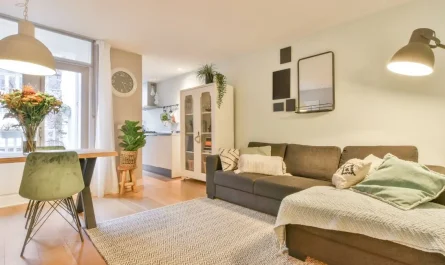How to Create a Decluttering Schedule That Actually Works: 5 Simple Steps to a Tidier Home
A neat home, in my opinion, is about more than just appearances. It’s about feeling in control and at ease.
Decluttering, however, might feel overwhelming at times. How do you even start? And how can you maintain your momentum?
At that point, I discovered the power of a straightforward decluttering routine. It divides the chaos into manageable chunks.
I can help if you want a more peaceful, clutter-free home but are unsure where to begin. I’ll walk you through five simple steps to create a timetable that genuinely suits your needs.
Together, we can transform your house into a destination you look forward to returning to.
Why a Decluttering Schedule Works
Having a plan makes decluttering feel less like a chore. It’s simple to become bogged down, put things off, or give up in the middle when you don’t have a routine. Your major aim is broken down into smaller, more achievable pieces by a schedule.
Instead of just a one-time blitz, this helps you develop a habit. Because you know exactly what to do and when, you won’t feel overburdened. Additionally, it keeps you motivated by rewarding you with small victories along the road.
Above all, your life should fit your timetable, not the other way around. You choose which topics to focus on and how much time to devote to each. Decluttering becomes sustainable rather than stressful in this approach.
Step 1: Assess Your Clutter and Set Realistic Goals
Examine your house thoroughly and identify any areas that are prone to clutter before you get started. Perhaps it’s that drawer you always overlook, your closet, or the kitchen counter.
Setting specific, achievable goals is made easier when you know exactly what needs your attention. Attempting to declutter your entire house at once will only make you feel overwhelmed.
Begin modestly. Focusing on one area at a time, as experts advise, makes the process less intimidating and more doable.
Realistic goal-setting helps you stay motivated and make progress without burning out. Check out these seven amazing ideas to declutter your attic this summer without going crazy if you’re searching for clever, stress-free solutions to deal with those challenging areas.
Step 2: Choose Your Decluttering Days and Time Blocks
Setting up particular days and times for decluttering is crucial after you know where to begin. Think of these as significant self-care visits.
Having a routine, even for just 15 or 20 minutes a day, makes a big effect. It keeps the momentum flowing and prevents you from putting things off.
Setting up time on your calendar makes decluttering a regular practice rather than a one-time event.
Recall that consistency is preferable to intensity. Compared to infrequent marathon cleanups, frequent tiny sessions stack up considerably more quickly. Try implementing easy daily routines, such as these five decluttering activities minimalists rely on every morning to keep their homes clean, to gain momentum.
Step 3: Break Tasks into Manageable Chunks
It’s overwhelming to declutter your entire house at once. Rather, divide work into more manageable, targeted portions. Take it one drawer, shelf, or corner at a time, for instance.
This strategy maintains motivation strong and makes progress visible. It’s similar to winning small skirmishes that culminate in a neat home.
To keep things lively and social, many members of Reddit’s r/declutter communities divide duties into daily challenges or games, such as the Minimalism Game.
Don’t set yourself up for dissatisfaction by trying to keep your pieces reasonable.
These six simple, effective room-by-room decluttering tips help speed up and lessen the stress of jobs that seem difficult to divide into manageable bits.
Step 4: Build Accountability Into Your Schedule
When you’re dealing with clutter alone, it’s easy to lose steam. Therefore, establishing some kind of responsibility can have a significant impact.
Whether you’re sharing your accomplishments on social media, joining an online group, or informing a friend about your goals, having someone to check in with keeps you motivated and honest.
As Woman & Home notes, accountability makes it simpler to maintain your plan by transforming decluttering from a solitary endeavor into a collaborative experience.
Never undervalue the importance of a little help; it can be the motivation you need during difficult times.
Step 5: Create a Clutter Exit Strategy
Decluttering is more than just getting rid of things; it’s also about preventing clutter from reoccurring.
The One In, One Out rule is a straightforward yet effective tactic. Make a commitment to getting rid of anything old each time you bring something new home.
Your clean home will last longer if you have a clutter exit strategy. There will be no more never-ending cycles of tension and mess.
Common Decluttering Mistakes to Avoid
Your decluttering process can go more smoothly and successfully if you steer clear of these typical pitfalls:
-
Procrastination:
Many people delay decluttering because it feels overwhelming. Putting it off only makes the clutter pile up and motivation fade. That s why setting small, manageable tasks with a clear schedule helps keep you consistent and moving forward. -
Emotional Attachment:
We often hold onto items because of sentimental value old gifts, memories, or just in case stuff. But keeping everything can quickly lead to clutter. Ask yourself if the item truly adds value to your life now. If not, letting it go can free up space and your mind. -
Unrealistic Expectations:
Expecting to declutter your entire home in one day sets you up for disappointment. Decluttering is a process, not a quick fix. Focus on small wins and steady progress to stay motivated and avoid burnout. -
Trying to Do Too Much at Once:
Tackling too many areas or items in one session can be exhausting and frustrating. Breaking tasks into smaller chunks, like a drawer or a shelf at a time, is more effective and keeps your energy up. -
Lack of a Clear Plan:
Starting without a plan can leave you confused about where to begin or what to prioritize. Creating a decluttering schedule with realistic goals helps keep you focused and ensures steady progress.
How to Involve Your Family in Decluttering
Getting the whole family involved makes decluttering much simpler and even more fun. But it takes some preparation and perseverance to get everyone on board.
-
Communicate the Why:
Start by explaining why decluttering matters to create a calmer, more organized home where everyone feels comfortable. When family members understand the benefits, they re more likely to cooperate. -
Set Shared Goals:
Involve everyone in setting simple goals. Maybe it s clearing out toys from the living room or organizing clothes together. When goals feel shared, motivation increases. -
Assign Age-Appropriate Tasks:
Give each person tasks that suit their age and ability. Kids can help with sorting toys or choosing what to keep and donate. Teens can tackle their own rooms or help with bigger decluttering projects. -
Make It Fun:
Turn decluttering into a game or challenge like a race to fill donation boxes or timed clean-up sessions. Play music or offer small rewards to keep energy high. -
Respect Boundaries and Feelings:
Decluttering can bring up emotions, especially with sentimental items. Be patient and avoid forcing anyone to get rid of things they re not ready to part with. -
Celebrate Progress Together:
Recognize and celebrate small wins as a family. It builds positive momentum and makes everyone feel proud of the tidy space they created together.
Bonus Tips: Keep Going Without Burning Out
Making lasting habits is the goal of decluttering; it’s not a one-time event. The objective is to continue without experiencing burnout or overwhelm.
Try spending only five minutes on small chores like cleaning a counter or organizing a drawer. These little victories build up and sustain your motivation.This bite-sized strategy is advised for busy lives by Zen Habits and Livingetc.
Participating in month-long challenges, such as the Minimalism Game or weekly decluttering assignments, is another excellent tactic. These provide a sense of accomplishment and keep things enjoyable. Reddit has a wealth of ideas and support.
Remember seasonal resets! As the year progresses, concentrate on other areas, such as papers in the fall or closets in August.
What You ll Gain When You Stick to the Schedule
Maintaining a decluttering routine does more than just organizing your belongings. It also has genuine mental health benefits.
Less visual confusion will be apparent to you, improving mental clarity and concentrate. Daily life will be easier as simple domestic tasks function more smoothly.
You’ll also be pleased with yourself for forming a long-lasting habit. Clutter won’t return as easily, and maintenance gets easier.
Final Thoughts & Encouragement
Remember,decluttering isn t about perfectionit s about progress. Building a habit over time will get you further than aiming for a flawless home overnight.
Be adaptable with your schedule. Adapt it based on your energy levels and lifestyle. Some days will be easier than others, and that s okay.
Take moments to reflect on your small wins they build momentum and keep you moving forward. Celebrate every drawer cleared and every corner tidied.
Your journey to a tidier, calmer home is unique. Keep going you ve got this.
If you want more easy tips to keep your home feeling fresh and organized, visitBuild Like New. Let s make decluttering simple together!
Disclaimer:The information provided here is based on research and personal experience but is for general guidance only. Results may vary depending on individual circumstances. Always consult a professional if you have specific concerns about your home or mental health.
Table of Contents
-
Why a Decluttering Schedule Works
-
Step 1: Assess Your Clutter and Set Realistic Goals
-
Step 2: Choose Your Decluttering Days and Time Blocks
-
Step 3: Break Tasks into Manageable Chunks
-
Step 4: Build Accountability Into Your Schedule
-
Step 5: Create a Clutter Exit Strategy
-
Common Decluttering Mistakes to Avoid
-
How to Involve Your Family in Decluttering
-
-
Bonus Tips: Keep Going Without Burning Out
-
What You ll Gain When You Stick to the Schedule
-
Final Thoughts & Encouragement
-
Common Decluttering Mistakes to Avoid
-
How to Involve Your Family in Decluttering




